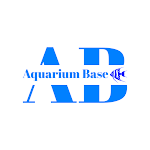Honey gourami are one on the smallest Gouramis species and are an ideal community fish especially with other small species such as Tetras and Rasboras
Honey gourami, also know as Trichopodus chuna, Colisa chuna, Trichopodus sota, Colisa sota, Polyacanthus sota, and its accpeted scientific name Trichogaster chuna, are one on the smallest Gouramis species and are an ideal community fish especially with other small species such as Tetras and Rasboras.
HONEY GOURAMI - TRICHOGASTER CHUNA DESCRIPTION
Honey gourami is native to India, Nepal and Bangladesh. It is found living in in rivers and lakes with vegetation in low altitude, and inhabits in heavily-vegetated, sluggish waters including pools, ditches, innundated fields, ponds and beels.
Trichogaster chuna are the smallest members of the Trichogaster genus. Although on rare occasions they can reach up to about 8 cm in length, Males will usually only reach about 4 cm and the larger females will grow no more than 5 cm. They can live for up to 4 years if kept in the correct conditions.
They have a golden honey type colour and flashes of red throughout the fish from its throat to its fins and tail. There are other colour varieties that include an orange flame colour and a normal dwarf honey colour which is more yellow through the body and has a large blue flash down its throat.
A number of descriptive common names are used for these varieties that including Sunset Gourami, Red Flame Honey Gourami, Dwarf Fire Gourami, Red Robin Gourami, Gold Honey Gourami, Red Honey Gourami, Red Fire Dwarf Gourami, Red Flame Gourami, Red Honey Fire Gourami, Sunburst Gourami, and various combinations of these terms.
The males are a lot brighter in colour as is common in all gouramis. The male is particularly brighter in colour during breeding season. The females are a slightly smaller but have plumper stomachs due to holding eggs.
HONEY GOURAMI - TRICHOGASTER CHUNA CARE
Honey gourami require a tank of minimum 20gallons for a pair with water temperature of 22-28 °C (optimal temp is 26 °C ), pH level of 6.0-7.5 and general hardness of 100-200 ppm. Change at least 15% water of the tank every week, and change about 25% of the water every month to maintain the hygiene of the fish home and keep the species away from health-related issues.
They can be kept in groups on singularly (4-6 specimens is recommended). Within a group they will develop a pecking order of sorts, with the dominant member chasing away the others during feeding time or from a chosen area in the tank. When in pairs, the male may become belligerent to the female. If kept in a group make sure there are plenty of hiding places to keep one or more of the individuals from being bullied.
They prefer heavily planted tanks, and males will often build their bubble-nests if provided with floating plants. This species is a Labyrinth fish and must have access to the surface of the tank so it can breathe. A sand substrate will be better instead of keeping rocks and stones in the aquarium. Arrange caves in the tank, so that the fish can take rest and hide in the caves.
Trichogaster chuna are a placid fish and will live comfortably next to other gouramis and other fish that aren’t too big and aggressive for them. They are good tank mates for species such as Corydoras, Danios, Loaches, White Clouds and catfish species.
They are omnivorous, easy to feed fish. They readily feed on, flake, small pellets, live foods such as brine shrimp and live worms. However, care should be taken to ensure food particles are not too large as they have a relatively small mouth. Generally feed once or twice a day.
HONEY GOURAMI - TRICHOGASTER CHUNA SPAWNING
Honey gourami are bubble nest builder. They can be bred in pairs or small groups. It does not use vegetation in its nest, but will build the nest under a leaf if available. Pairs will also form a temporary bond and the male is more tolerant of the females hesitancy to spawn.
The water level should be reduced in during spawning, and the temperature should be approximately 28 °C and with a pH level of around 7. They need plenty of floating plants and/or stem plants grown to the surface. Cover the tank well to keep the air above the water warm and humid, to help prevent damage to the labyrinth organ.
A pair or small group will need to be well conditioned with small offerings of live and frozen foods several times a day. The male builds the bubble nest, and after building it, it shows the courting colors into blue-black by swimming towards the female fish. The changing colors of the male fish attract the female.
After the mating, the female releases her eggs, about 20 per spawn, the male will immediately fertilize them. The male will pick the eggs up in his mouth and put them in his bubble nest. The male continues guarding the nest, and rebuilds and repairs it if needed, while the female leaves the area.
The eggs hatch after two days and the fry become free swimming three days later. When they commence free swimming the fry should be fed infusoria, 10 days later brine shrimp, and 3 weeks later finely ground flakes. Freeze-dried tablets may also be fed to older fry.
BUY HONEY GOURAMI - TRICHOGASTER CHUNA AND RELATED PRODUCTS














COMMENTS